Hows’ that for a mouthful? Yeah, it’s a long title, but it has to be. You know with what “news” has actually become over the last few decades, most Americans are the most ignorant and uninformed people on the planet. Sure they have tons and tons of media outlets… but all the outlets originate from one or two main sources. And those are all controlled by the United States government.
Sad to say.
Anyways…
Grab a glass of wine and some delicious pizza and listen to a little story that I want to tell…

Firstly, for those of you that are unaware of the background, here’s a brief overview…
- The Trump Administration was engaged in a hybrid war with China that included carpet-bombing of Chinese food and livestock with bio-weapons (8 strains). HERE.
- It was planned to be a minimum of 8 years in duration, and 2020 was the year that was to “kick off” the “hot” (shooting) portion of the war. HERE.
- The Coronavirus was a really devilish plot using and A-strain to inoculate four “friendly” nations, and the B-strain to attack four “enemy” nations. HERE.
Tin foil hat stuff, eh?
Nah.
Let me tell you all a nice little story…
When Donald Trump was elected there were some high hopes that a “businessman” would be able to conduct global and international trade and relationships from a business point of view with China. That is, as opposed to a political viewpoint as was displayed by the Obama administration when it was in Washington. Many nations, specifically China, believed that America would (finally) join the rest of the world in being a reasonable partner in trade and a steward for the planet.
That did not happen.
Instead, he staffed his administration with “hard Right” neocons and went on a ‘war footing” regarding China. Publicly, it was a series of “failed negotiations” and an increase in tariffs on Chinese made goods. Privately it was a complete “hybrid-war” gearing up for a “hot war” event that was to be “kicked off” in late 2019.
The idea was to to create all kind of stresses on the Chinese people, and then when the nation was at it’s weakest, America could invade under the pretext of saving “democracy” all “for the people”.
The public actions are well known. that included tariffs, censorship, attacks on Huawei, etc. This includes the “pro democracy” (NGO-sponsored) “color revolutions” in Hong Kong, and the military incursions to destabilize the Uighur population in Xinjiang.
The non-public actions are not that well known. These included carpet bombing of Chinese livestock with bio-weapons agents, the use of drones to hit remote villages, the destruction and suppression of chip-making equipment to China, interruption of precious mining operations, behind-the-scenes manipulations and black-mailing of “friendly” national leaders, and military probes into Chinese territory and systems.
Now, around 2019 China received word that a “big event” was planned to occur on or during CNY (Chinese New Year), and whether they knew exactly what it was, or how it would manifest, they knew something was up somehow. So once they received word, they immediate began reconnaissance efforts.
These reconnaissance efforts are just now coming to light…
The following article is from The Drive. Reprinted as found, and all credit to the author. Edited to fit this venue.
Mysterious Drone Incursions Have Occurred Over U.S. THAAD Anti-Ballistic Missile Battery In Guam
It's yet another reminder of just how vulnerable highly strategic assets, even air defense systems, are to low-end drones.
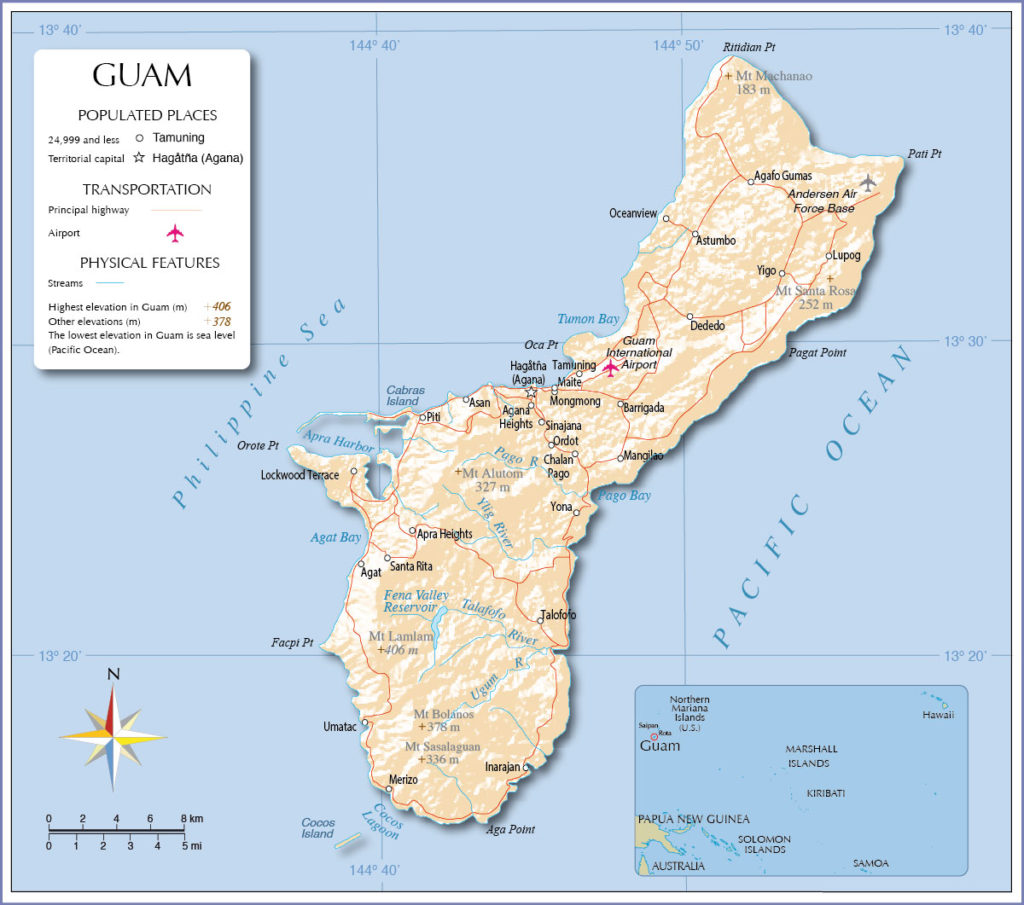
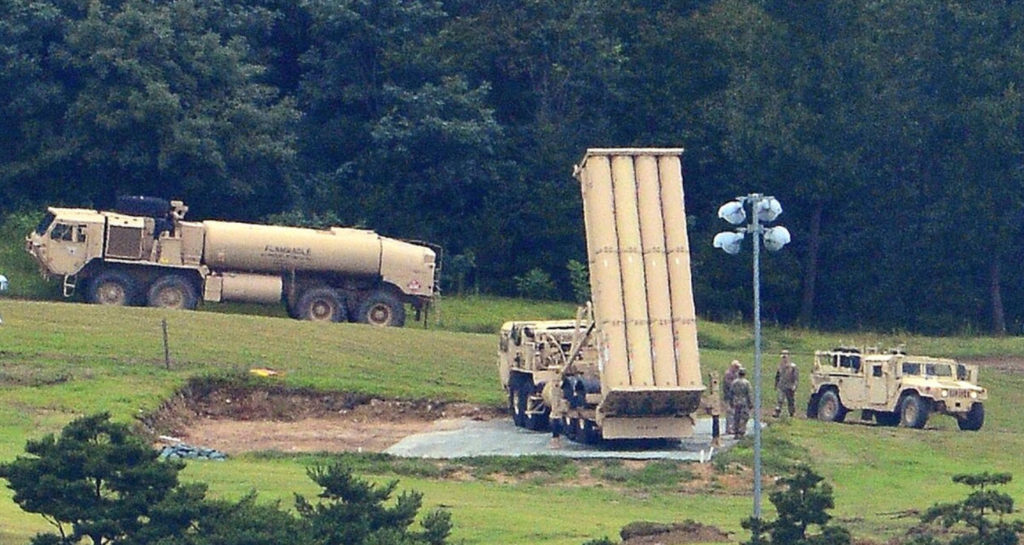
The intruding craft were described as “quadcopter-like” vehicles with bright spotlights that flew from over the water and then across the North West Base area. They flew at not much higher than treetop level, about 20 to 30 feet above the ground. On a number of nights, the craft would make multiple incursions in the very early morning hours. They would show up, disappear, then come back a few hours later.
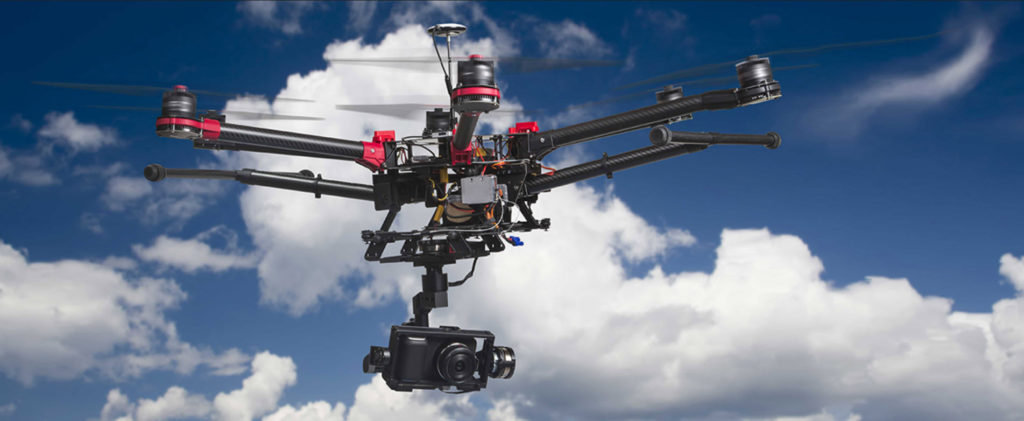
The spotlight that shone down from the craft made it hard for personnel to make out a detailed description of the craft, although estimates range from being three to five feet in diameter largely based on the size of the spotlight.
The craft would maneuver dynamically, appearing with the spotlight on, then disappearing, just to reappear moments later over to one side or another with the spotlight on, which was unsettling to those that witnessed it.
Supposedly, there was a concerted effort to identify, track, and down the mysterious craft, but it doesn’t seem that those efforts were successful based on our understanding of events.
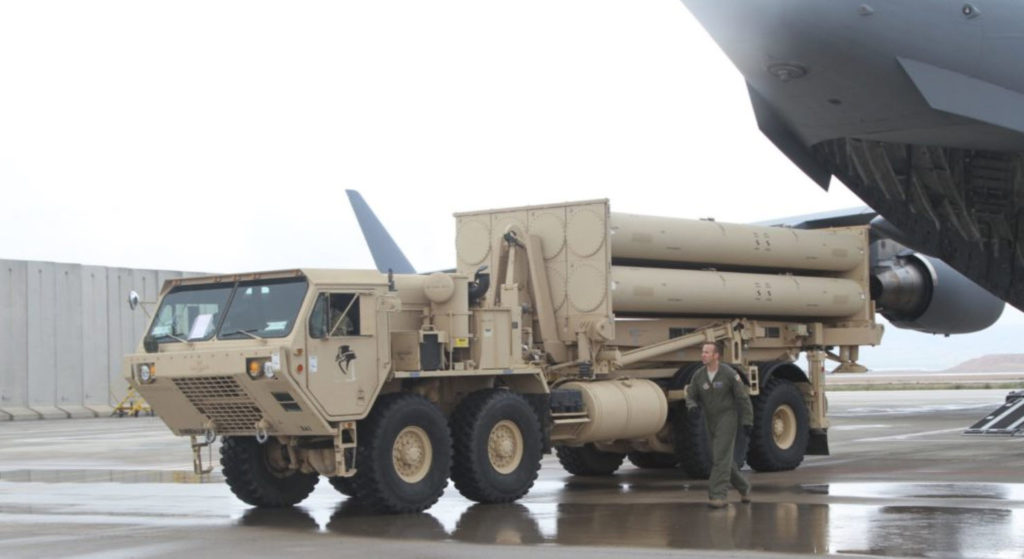
This information was highly interesting if not downright alarming, but we had to find hard evidence that at least something similar did indeed happen during this timeframe.
We got just that straight from the U.S. Air Force.
The War Zone was able to confirm that at least one of the incidents described above did occur through the Freedom of Information Act (FOIA), by which we obtained a copy of the relevant entry from the Air Force’s 36th Security Forces Squadron’s internal crime blotter. The is unit is part of the 36th Wing at Andersen Air Force Base.
The entry describes the “possible drone” as being of an
"unknown color and size, [with a] bright white light."
Army personnel at “THAAD Tower #2” had radioed in at
"2315," or 11:15 PM to report "a bright white light was seen from [their] LOCATION hovering over a field and quickly disappeared."
"Tower #2 personnel were unable to provide any further description,"
.
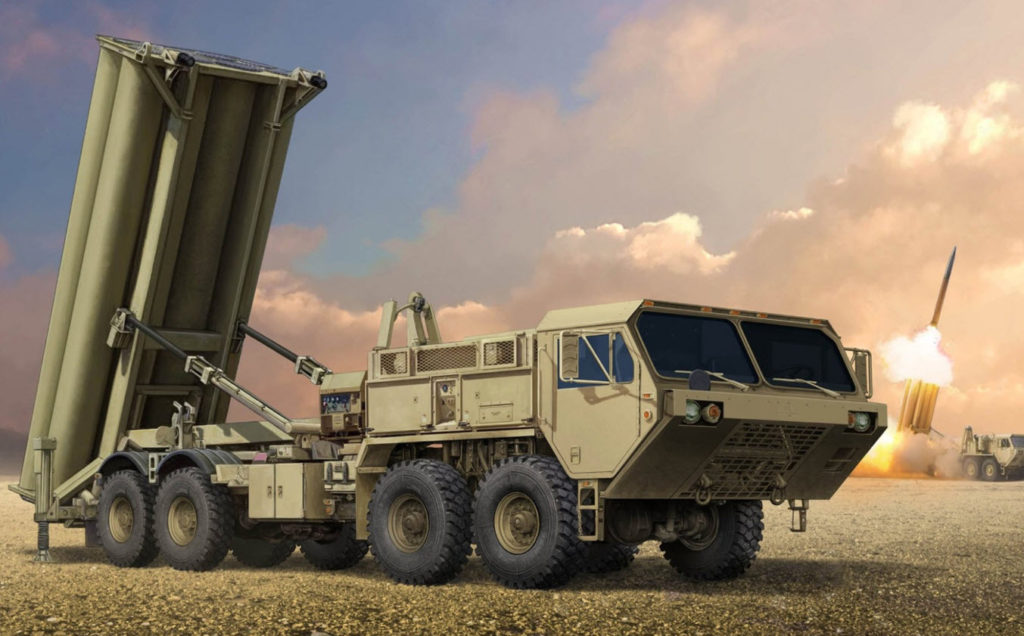
The “JET PATROLS” that are referenced in the document are not aircraft, but are Jungle Enforcement Teams of the 36th Security Forces Squadron.
…the blotter entry continues.
"At 2318, JET PATROLS were in the vicinity conducting covert operations. None of the JET PATROLS were able to locate the suspicious white light."
The Air Force describes the teams as being
"tasked with preventing security breaches, apprehending poachers, and securing the perimeter around the jungle."
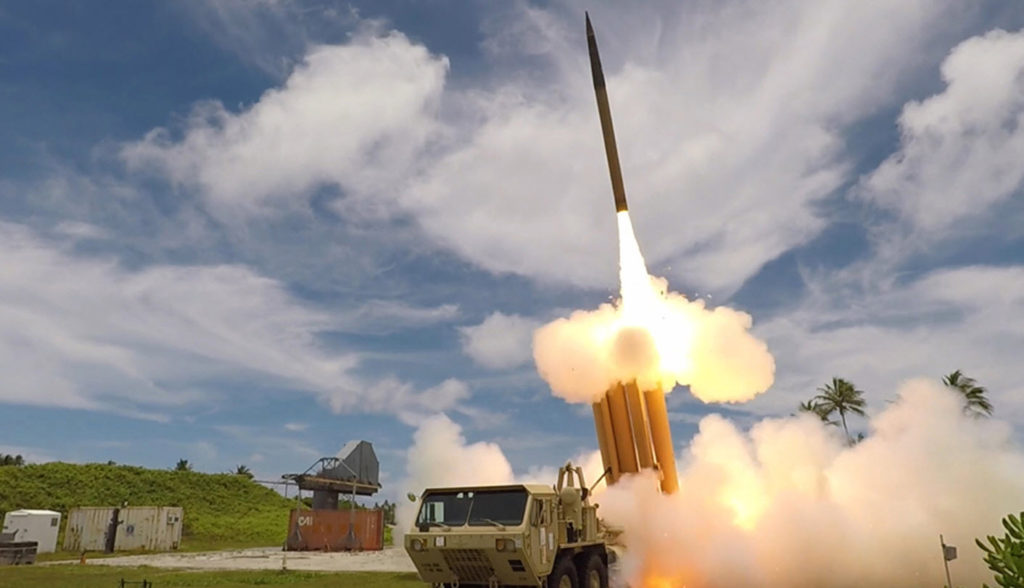
The team’s personnel move silently through the jungle that permeates much of the base at night and have unique human tracking skills. You can read all about this specialized security force in this official media release.
Interestingly, the 36th Security Force Squadron’s blotter lists this incident as
"Unauthorized Unmanned Aerial Systems/Security Incident #2019-2,"
which implied that there was at least one other similarly classified drone incident at Andersen Air Force Base before this one by that point in the early 2019 calendar or fiscal year.
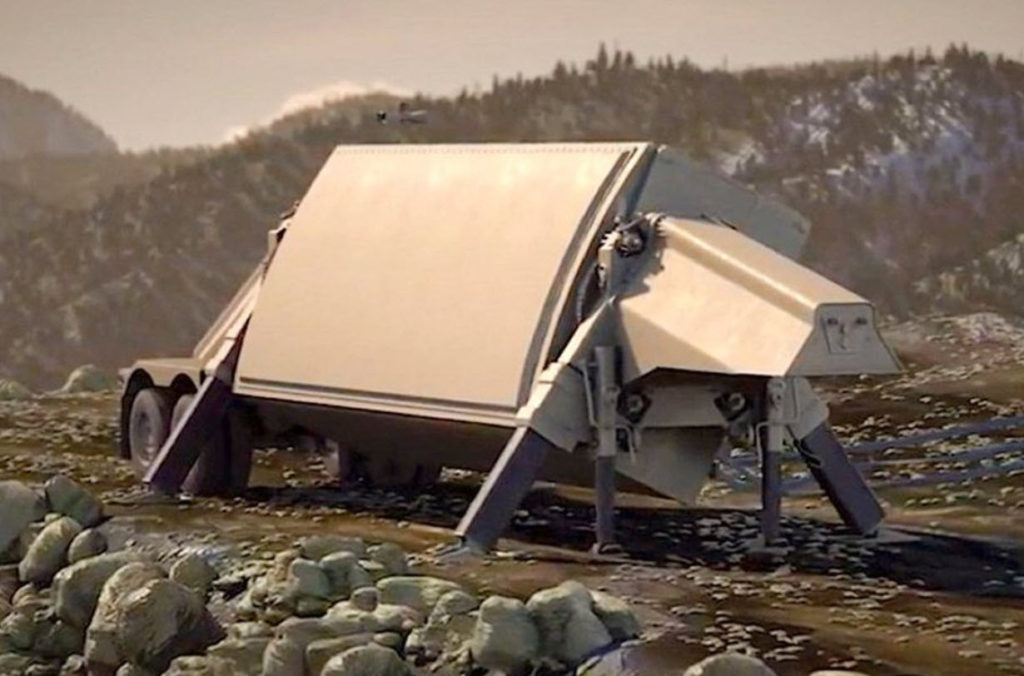
Another FOIA request confirmed that there was a “2019-1” blotter entry, but the Air Force withheld information about that event citing privacy and law enforcement exemptions.
Agencies typically withhold records for law enforcement reasons because of a potential risk of exposing sensitive tactics, techniques, or procedures, or because of an ongoing investigation.
It is then doubly interesting that the March 2019 incident near the Army’s THAAD battery at North West Field was not also subject to the exemptions.
U.S. Indo-Pacific Command (INDOPACOM) forwarded a separate FOIA request regarding this incident, any other similar occurrences around the same timeframe, to the U.S. Army. The War Zone is still awaiting a response to that request, as well as another one to the Guam Police Department. We inquired directly to the 36th Wing and INDOPACOM, but never got a response.
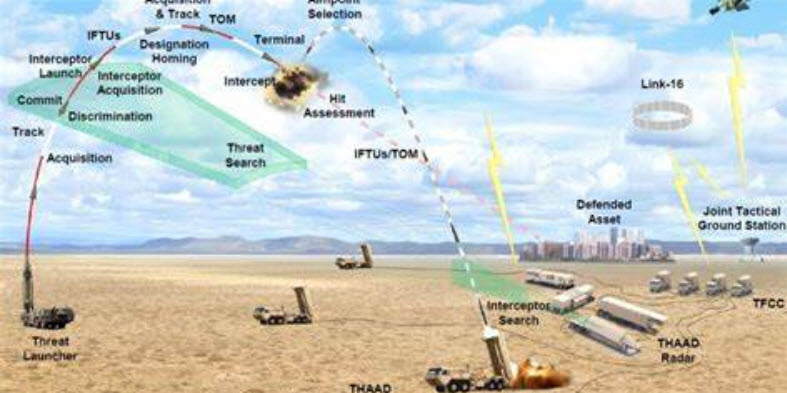
We found this information to be highly troubling for a number of reasons.
The most important is that this craft was able to penetrate its way over an air defense system that is tasked with defending the highly strategic island from ballistic missile attacks.
In other words, that THAAD battery is largely what stands in the way of a country like North Korea from holding the island at imminent risk.
The system is even capable of shielding against a lower volume barrage from a peer state competitor, such as China.
Guam would be near the top of Beijing’s targeting list during a conflict with the United States and its growing ballistic missile arsenal has been developed largely to deny the U.S. the utility of its regional bases during the open stages of a conflict.
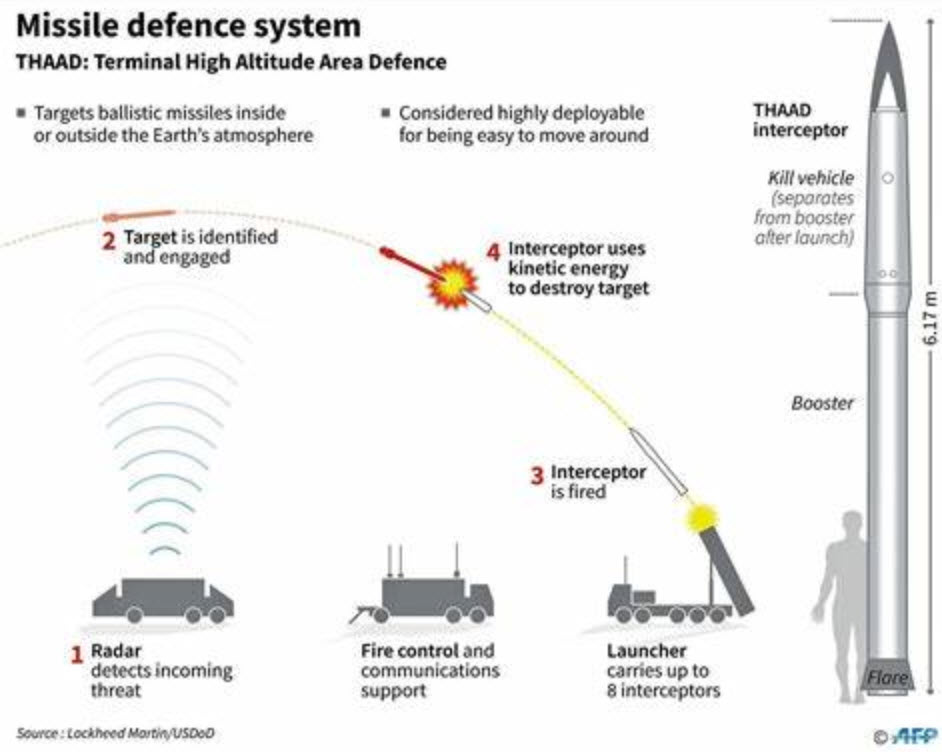
The thing is that destruction of enemy air defenses (DEAD) is not defined by a platform, it is a mission.
Traditionally we associate the objective of destroying enemy air defenses with standoff cruise missile attacks and ‘wild weasel’ fighter jet operations, but DEAD can be carried out by a team of special operators with some well-placed explosives or via a barrage of naval gunfire.
Even carefully deployed malware that targets the software that an air defense system and its mechanical component run on could potentially be destructive enough to be considered a DEAD method.
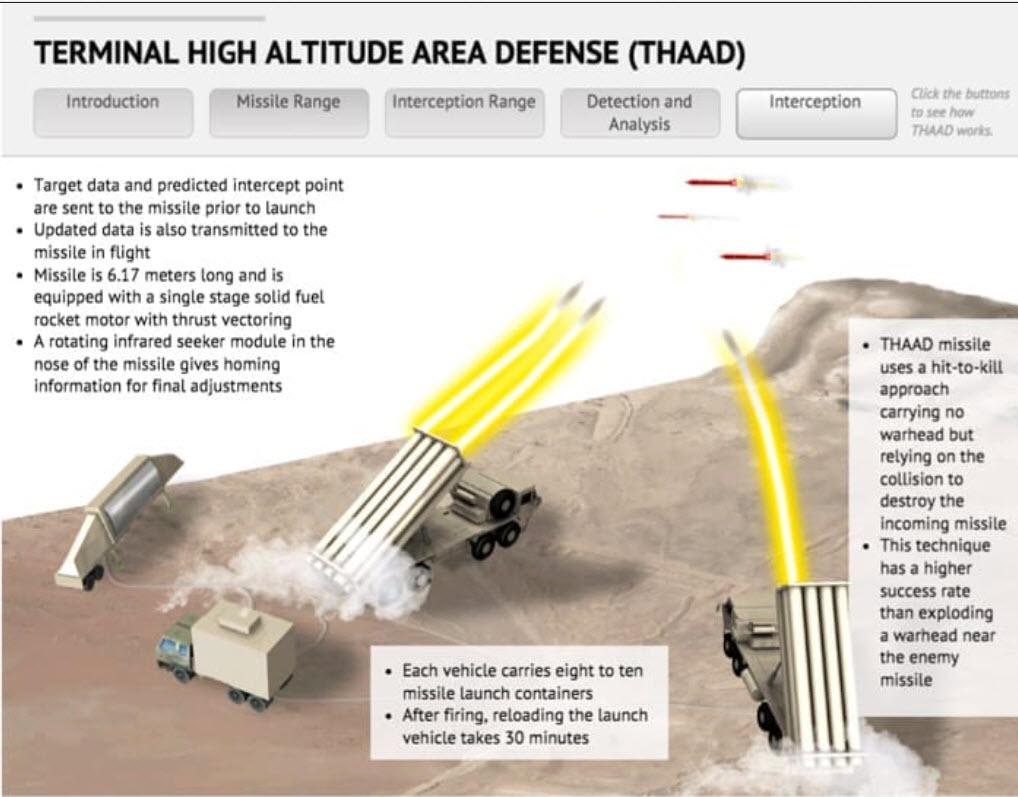
With that said, America’s preeminent adversaries in the entire region would make taking out the THAAD battery on Guam a top priority during a conflict or even as part of a limited demonstration of force.
Why barrage it with ballistic missiles or attempt a cruise missile launch from a forward-deployed submarine or even a clandestine commando raid when you can just fly a drone loaded with explosives into it?
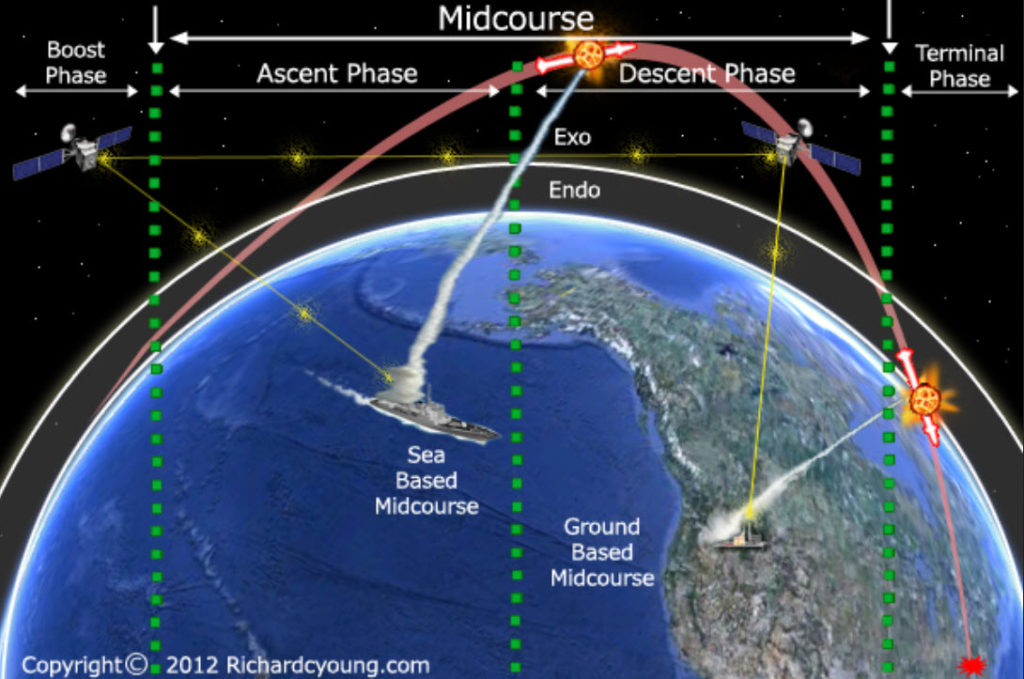
And no, you don’t need some high-end drone system to do this as real-world events have highlighted many times over.
Drug cartels are now whacking their enemies with off-the-shelf drone-borne improvised explosive devices and even U.S. allies are actually manufacturing hobby-like drones just for this purpose.
Somewhat more sophisticated types can be launched from longer distances and can even home in on radar or other RF emissions sources, like THAAD’s powerful AN/TPY-2 Radar and data-links, autonomously, beyond just striking a certain point on a map.
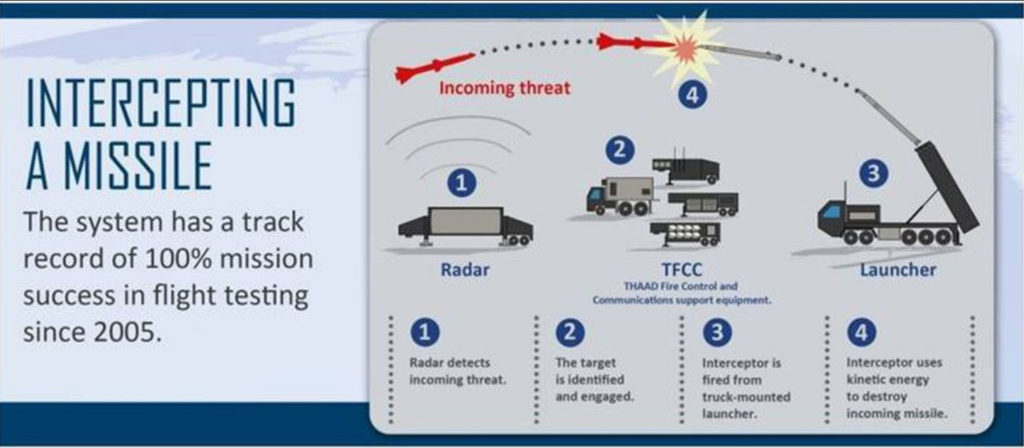
Simply put, ‘shooting the archer,’ in this case an advanced anti-ballistic missile system that protects America’s most strategic base in the entire region, via a relatively cheap drone is both an absurdly obvious and terrifyingly ironic tactic—the U.S. can shoot down ballistic missiles, but the critical systems used to do so remain extremely vulnerable to the lowliest of airborne threats—cheap drones.
For those that follow our work, this is not news. The U.S. military was dangerously aloof when it came to the threat posed by low-end drones.
We spent years highlighting this threat while seeing the U.S. military do very little to actually counter it, that is until ISIS was constantly dropping bomblets from drones or just flying explosive-laden drones into allied positions during the Battle of Mosul, Iraq.
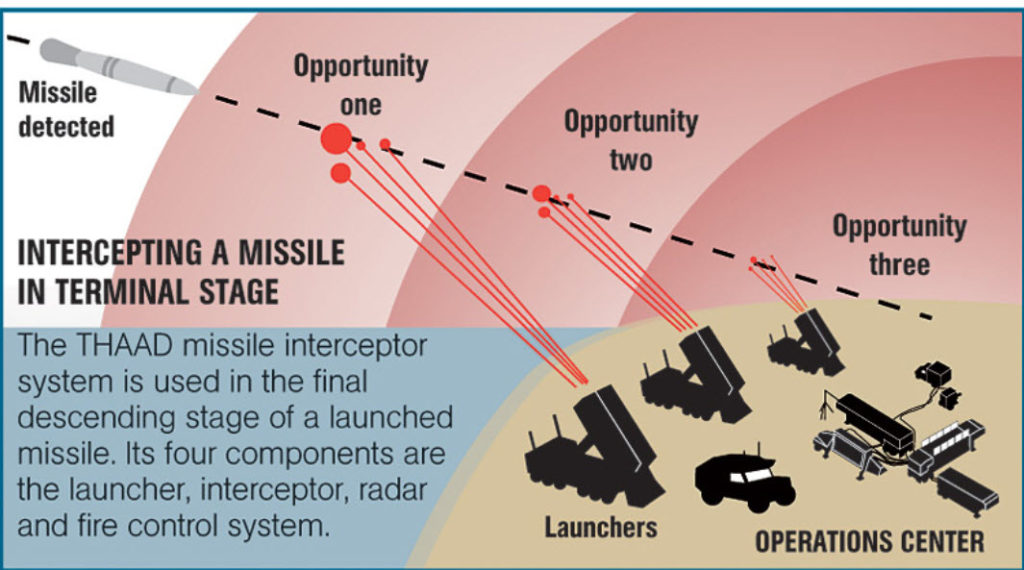
The threat has ballooned exactly as we predicted since then, with mass drone attacks on forward operating bases, attempted assassinations of ruling figures via drone, and even a successful drone assault right at the heart of Saudi oil production a year ago.
In fact, the threat has gotten so bad that top U.S. commanders in the field are saying the constant presence of nefarious drones over or near their troops and equipment is what keeps them up at night.
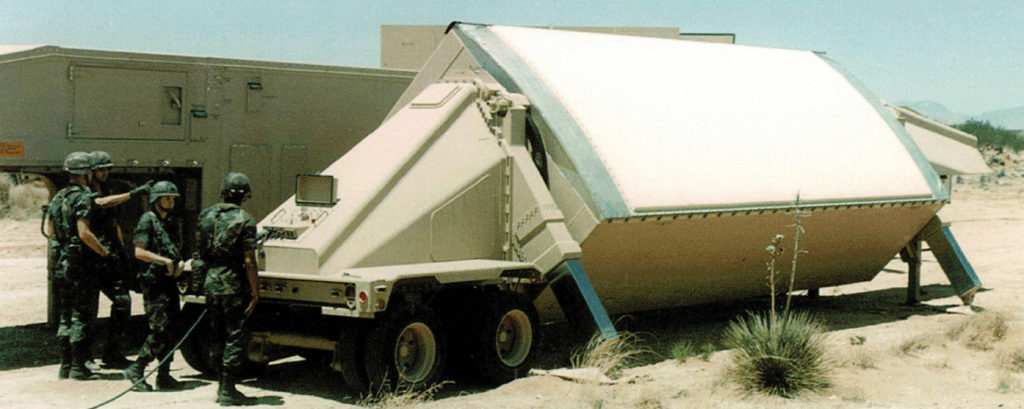
In the meantime, it’s abundantly clear that even America’s most capable air defenses are vulnerable to the most meager of aerial capabilities—commercially available drones.
If anything else, this is yet another, but possibly the biggest example of just how misplaced the U.S. military’s priorities had become when it comes to investments in air defense over the last two decades or so.
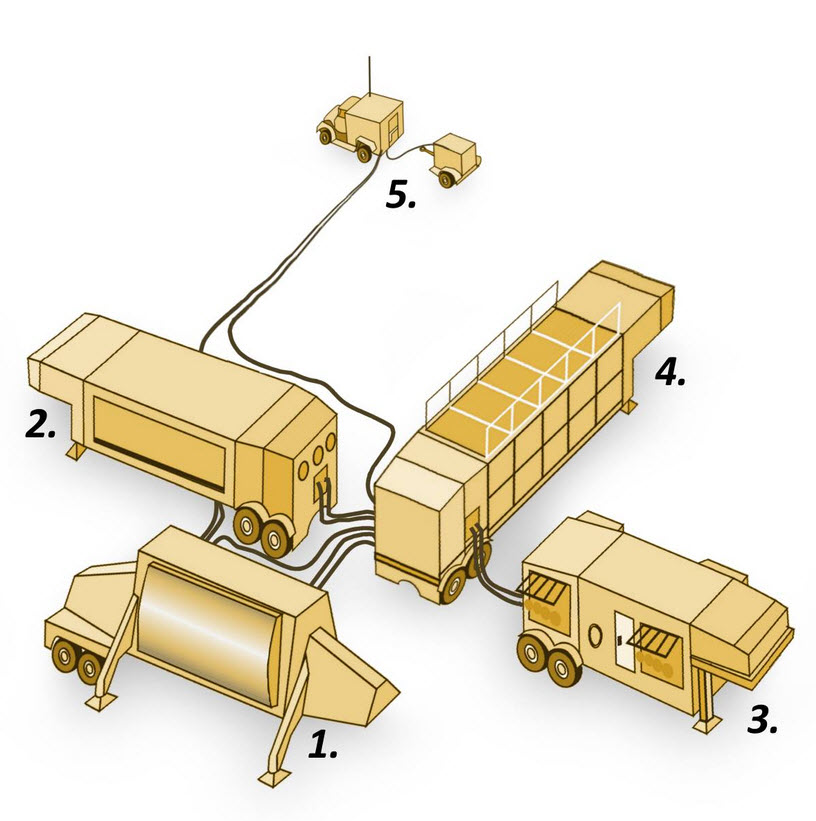
You can read how the Pentagon let its short-range air defense (SHORAD) capabilities wither on the vine to an appalling degree while concentrating on higher-profile, ‘sexier,’ and drastically more lucrative weapon systems in this past feature of ours.
The Pentagon’s appalling lack of vision regarding the emergence of this threat has made quickly ramping-up efforts to counter it that much more of a scramble, which is ongoing now.
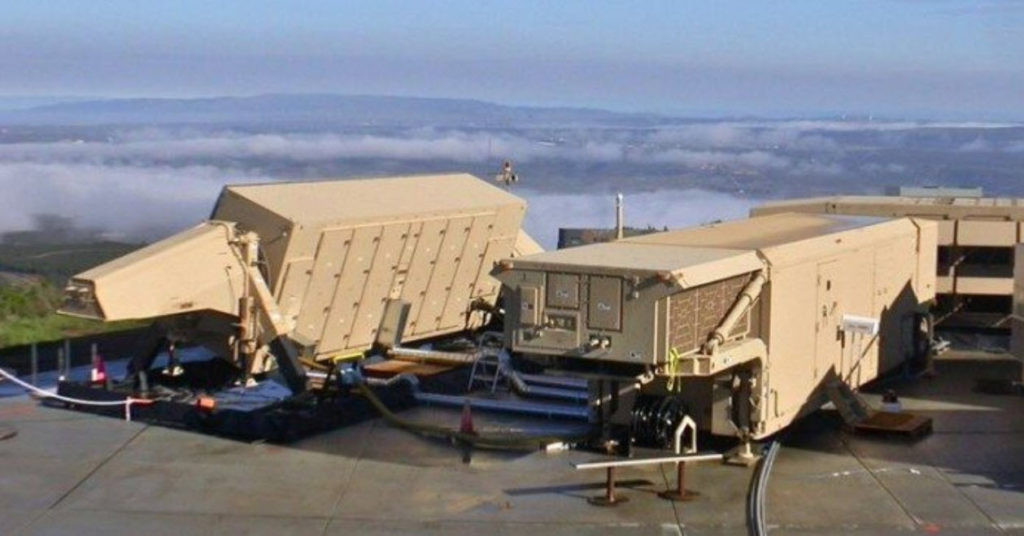
Still, America’s potential enemies are already a step ahead, working on swarming low-end drone concepts that will overwhelm most countermeasures currently in the works.
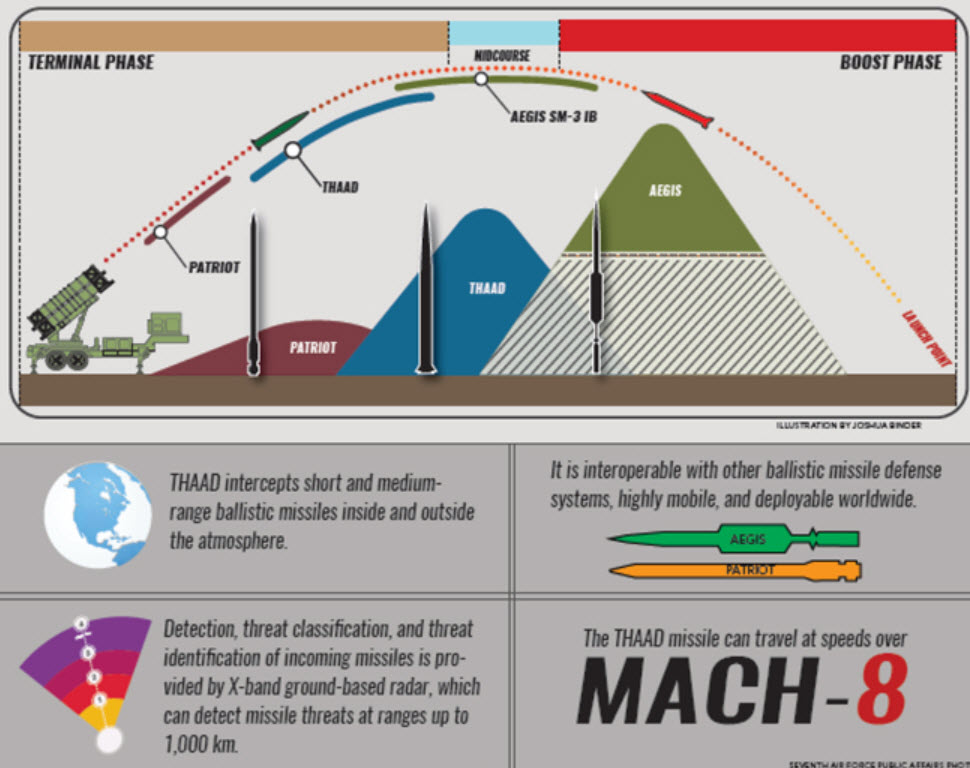
So what is happening here? How does this all play into a rash of other troubling drone sightings, including highly similar ones that have occurred over American nuclear facilities and in other highly restricted airspace, as well as the ongoing buzz about unidentified aerial phenomena (UAP)? We will tie years worth of reporting on all these issues and others together very soon in a capstone piece.
In the meantime, the events on Guam in 2019 serve as maybe the most outstanding reminder of how the Pentagon’s fixation on high-end threats, and the huge gold plated weapons programs that are put into play to counter them, have left even those very capabilities remarkably vulnerable to far less advanced attacks.
As to quote the character from “Laugh In”… “Very Interesting…”

So what does this mean?
Well, strangely…
…immediately before the bio-weapons attack on CNY 2020 there were incursions of a reconnaissance nature on Guam investigating the THAAD missile batteries. These incursions were visible. They intentionally turned on flood and spot lights and were not secretive. Which is a very UNUSUAL way to conduct reconnaissance operations.
One must wonder what was actually going on.
- Who operated the drones? Was it the Chinese? Or an American operation that was testing the defenses? Was it someone else?
- Where were the drones controlled from? Was it from a civilian located on the South end of the island, or was it from a submarine or some other vehicle?
- Why did the drones turn on the lights? Was it to be noticed, or was it to take quick photographs?
- Why isn’t the American military concerned? Perhaps this event is really nothing to worry about. You can trust the United States government, right?
The thing is, however, this is not the only event leading up to the 2020 CNY bio-weapon attack on China. Throughout 2019, American bases, and Naval ships were being probed.
Such as described in this article. Reprinted as found. All credit to the writer, and edited to fit this venue.
Navy’s Top Officer Says ‘Drones’ That Swarmed Destroyers Remain Unidentified
A series of bizarre events off Southern California in 2019 remain unexplained according to the Chief of Naval Operations.
At a roundtable with reporters today, Chief of Naval Operations Admiral Michael Gilday, the U.S. Navy’s top officer, was asked about a series of bizarre incidents that took place in July 2019 and involved what only have been described as ‘drones’ swarming American destroyers off the coast of Southern California.
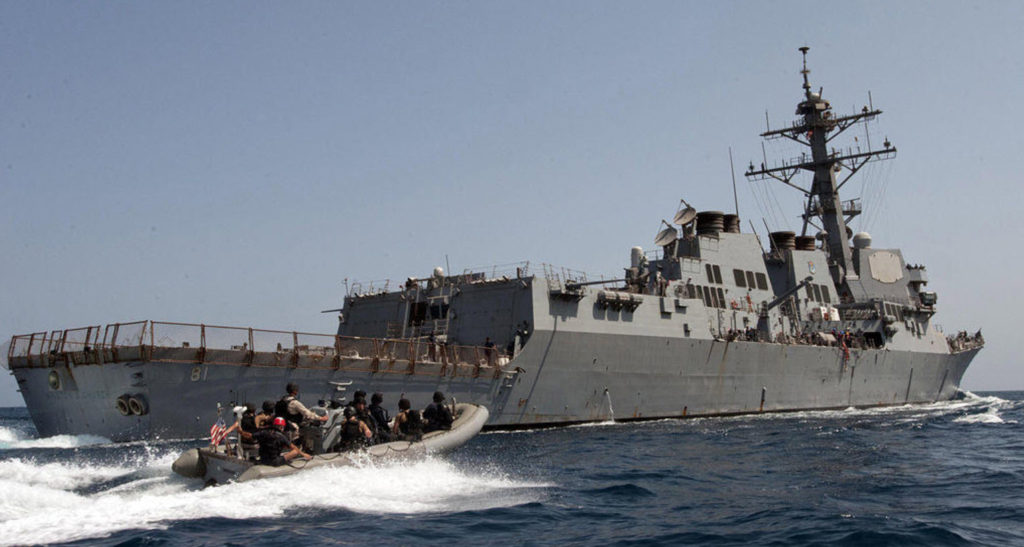
The War Zone was the first to report in detail on this series of mysterious events after the incident was originally uncovered by filmmaker Dave Beaty.
Asked by Jeff Schogol of Task & Purpose if the Navy had positively identified any of the aircraft involved, Gilday responded by saying:
“No, we have not. I am aware of those sightings and as it’s been reported there have been other sightings by aviators in the air and by other ships not only of the United States, but other nations – and of course other elements within the U.S. joint force.” “Those findings have been collected and they still are being analyzed," Gilday added. "I don’t have anything new to report, Jeff, on what those findings have revealed thus far. But I will tell you we do have a well-established process in place across the joint force to collect that data and to get it to a separate repository for analysis.”
At the time of writing, it is unclear if Admiral Gilday was referring to the Department of Defense’s Navy-led Unidentified Aerial Phenomena Task Force (UAPTF), created last August to examine “incursions by unauthorized aircraft into our training ranges or designated airspace.”
A Senate-requested report on Unidentified Aerial Phenomena is expected later this year. Representatives from the UAPTF could not be reached for comment.
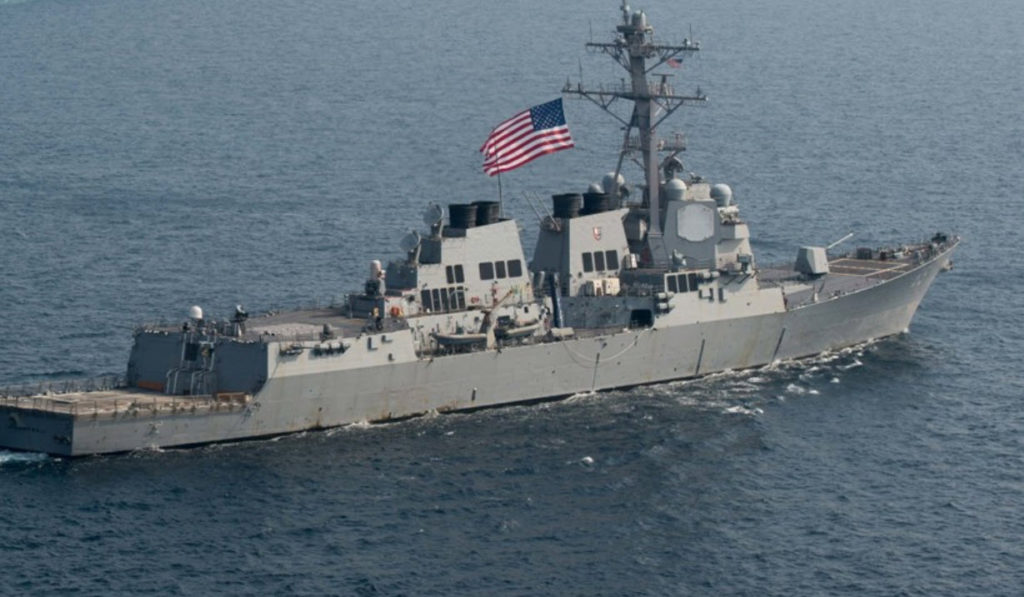
A preliminary response to our Freedom of Information Act (FOIA) inquiries indicates that the Office of Naval Intelligence (ONI) possesses documents about the incident and that they are intermingled with records from several other agencies. This would make sense as the UAPTF was established within ONI, according to the Senate Select Committee on Intelligence.
Schogol also asked if there was any suspicion that the aircraft described as drones were “extraterrestrial.” Gilday responded,
“No, I can’t speak to that - I have no indications at all of that.”
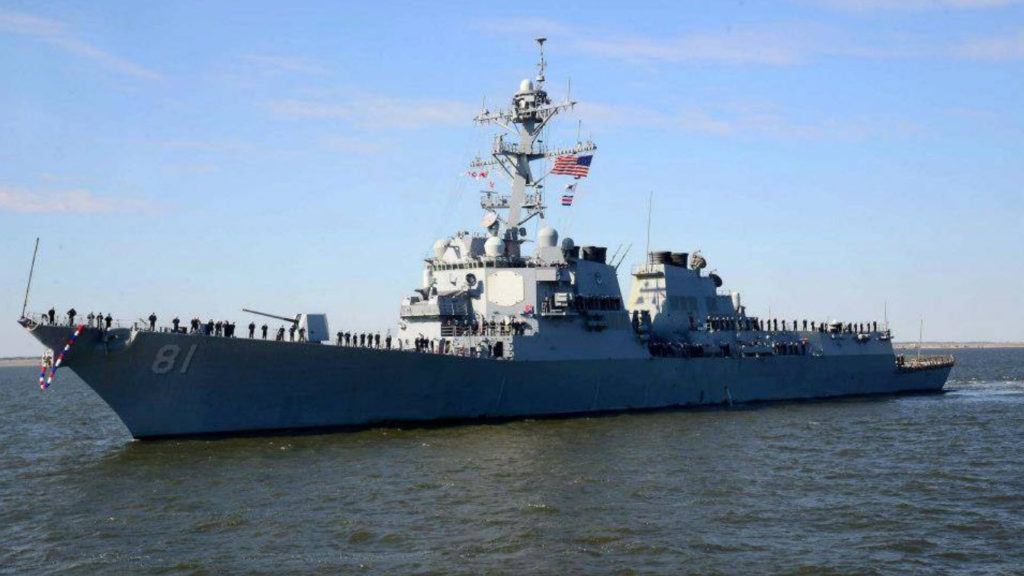
The War Zone has reached out to the Navy, Coast Guard, and the Federal Bureau of Investigation for further details regarding the drones flying near Navy destroyers in 2019. Members of the intelligence and armed services committees in both the Senate and the House were asked for comment, as well. While at least some elected officials indicated they were aware of the issue, none were able to make a statement at this time regarding the encounters off the coast of Southern California two years ago.
So What is going on?
Well, you know that throughout the Pacific in 2019, drones were “buzzing” and observing United States military operations. They studied defense operations, ship capabilities, and base operations.
This all occurred simultaneously while the Trump Administration was ramping up a “war stance” towards China.
- 2010 – 2016 Obama setting up bases that surrounded China.
- 2017 – 2019 Trump media march for war, color revolutions, tariffs, and induce famine inside of China.
- 2020 was to be the year for actual military operations, kicked off by a full-scale bio-weapon attack with R0=20% lethal COVID-19B strain. (Not the “safe” American R0=0.01% COVID-19A strain.)
Also simultaneously during this time period was a complete restructuring of the American military…
- US Navy to lower fitness standards
- Military to Allow Transgender Troops to Serve Openly
- Army announces new rules for ponytails, nail color
- Army’s new rules for female soldiers:ponytails and nail …
- Nearly half of females failed to graduate … – Military News
- The Army is lowering some standards to meet higher …
- The U.S. Army lowers recruitment standards … again.
As well as…
- U.S. Army to review gender-neutral physical fitness
Overwhelming Failure Rate Among Women Causes Army To …
- New concerns that lower fitness standards fuel disrespect
- Female Soldiers Will Be Allowed Lipstick, Nail Polish, and …
- Gay, Lesbian, and Transgender in The US Military
- LGBT service members are allowed to be … – Military Times
Combined we see a picture that is quite disturbing.
- A Washington DC establishment desirous of a “Hot War” with China. Not only one of the largest nations on the planet, but the home of most of the factories, technology, and and military on the planet.
- A realization that China has Intel that indicates activities that might happen in the future. Somehow they found out about the CNY plans a year earlier.
- Scanning and recon of American Naval forces, bases and defenses in the South Pacific right before the CNY 2020 Bio-weapon attack.
- A politically focused restructuring of the military.
- An over emphasis in American technical superiority, and a discounting of the basic physical standards of the military.
One cannot help to remember stories about similar events in the past and how they all turned out.
I am reminded of Babylon. Not the city written about in the Bible, but the much later incarnation. The Babylon of the Islamic Empire. It was the center of all society, technology, and manufacturing in the ancient world.
But it was ruled by self-absorbed fools.
And out from the East came a “rough and tumble” people that DID.NOT.PLAY. They wanted to align with the Islamic nation, they wanted to expand but incorporate the nation and peoples in with their society.
Nope!
Says the self-absorbed Babylon ruler drinking his wines. Singing his songs, dancing with his friends…
The following is from HERE. All credit to the author, and reprinted as found and edited to fit within this venue.
The Mongol Sack of Baghdad in 1258
By Eamonn Gearon, MA, Johns Hopkins University
The Mongol conquest of the Abbasid Caliphate culminated in the horrific sack of Baghdad that effectively ended the Islamic Golden Age.
The Islamic Golden Age—from the 8th to the mid-13th century—was one of the greatest periods of human flourishment in knowledge and progress, with Baghdad as its focal point.
A truly global repository of human knowledge, this Arab-Muslim imperial capital also welcomed—indeed encouraged—scholars from across the known world. As its wealth and fame grew, more and more scholars and engineers were drawn to the city from all over civilization.
But in January 1258, a vast Mongol army reached the city’s perimeter and demanded that the caliph—al-Musta’sim, the nominal spiritual authority of the Islamic world—surrender.
History of Baghdad: The Greatest City in the World
If you can imagine the shock waves, were London razed to the ground tomorrow, you’d be getting close to the horror that was about to accompany the Sack of Baghdad in 1258.
Founded 500 years earlier, Baghdad’s population had reached one million within a century, making it the world’s largest, most prosperous, and celebrated city. If one thinks of London in 1897—the year when Queen Victoria celebrated her Golden Jubilee—the English city on the Thames was by then the largest and most important city on earth. In 1897, London was peerless in the world, with nowhere else coming close to matching its power and influence. It was the capital, and the fulcrum, of the British Empire.
A Devastating Moment in History for Muslims in the Middle East
For many historians, the arrival of the Mongols into the heart of the Muslim faith and empire is the single most devastating moment in the history of the Muslim Middle East. It’s easy to see why—and hard to argue otherwise—because the Sack of Baghdad would mark the end of the Islamic Golden Age.
Rather than submit, the Abbasid caliph challenged the Mongols to attempt to storm his city, if they dared. The nomadic army from Asia—led by Hulagu Khan, one of Genghis Khan’s grandsons—did indeed dare. Doing what they are most famous for, the Mongols thrashed Baghdad. In 10 days of unremitting violence and destruction, Baghdad and its inhabitants were completely and utterly vanquished. Almost without exception, the population was either put to the sword or sold into slavery. The River Tigris ran red—to cite one of the most over-quoted, and overwrought phrases in history—with the blood of slaughtered men, women, and children.
After this, every building of note in Baghdad—including mosques, palaces, and markets—was utterly destroyed, among them the world-famous House of Wisdom. Hundreds of thousands of priceless manuscripts and books were tossed into the river, clogging the arterial waterway with so many texts, according to eyewitnesses, that soldiers could ride on horseback from one side to the other. Of course, the river turned from red to black with ink.
Who Were the Mongols?
The Sack of Baghdad fits, like a hinge, almost exactly in the middle of two defining dates in the history of Islam, from the founding of the faith in the year 622 to the end of the last caliphate in 1924. Even by the standards of the day, the destruction was shocking, and the results long-lasting, if not permanent. The Mongols’ name during this period in history was a byword for destruction. Who were they and where did they come from? Is there any reason to think that they were any more destructive than other peoples at the time?
The Mongols, an ethnic group, originating in north and central Asia, were typically pastoral peoples, whose nomadic lifestyle inevitably brought them into conflict with more settled populations. Probably the best example of how settled peoples tried to restrict their otherwise free movement is the Great Wall of China. The wall was essentially built to hold back incursions of their Mongolian neighbors to the north.
This preference for nomadism over a settled existence is central to the view of the Mongols as especially destructive. As one writer put it, while Muslims built cities—Baghdad and Cairo, for example—Mongols destroyed them. Does this mean that the Mongols were inherently more ruthless or violent than Muslims or crusading Christians? Not necessarily. Rather, it shows that their priority, in terms of conquest, was for land, for grazing—for space even—rather than for cities and confinement.
As one writer put it, while Muslims built cities—Baghdad and Cairo, for example—Mongols destroyed them.
One thing that came out of the Mongols’ lack of interest in seizing cities was their enhanced mobility. Often living on a diet of mare’s milk—or blood, if the mares were not lactating—Mongol custom meant that they never washed their clothes. This, along with a heavy fat diet—both milk and meat—no doubt accounted for the Mongols’ reputation as a very smelly, as well as scary, foe.
The Fierce Mongol Warriors
Contemporary chroniclers tell us that Mongol warriors were most comfortable in the saddle, literally, it seems. If they had to move more than a hundred yards, or so, they’d jump on a horse and ride. Also, all warriors owned numerous mounts, allowing them to cover larger distances than more traditional cavalry found in the Near East and Europe. While they rode light into battle, the Mongols used harnessed oxen to pull their heavier and more cumbersome possessions from place to place.
An important facet of the Mongol way of war and conquest was their use of terror as a tactic. The banging of metal pots and the rattling of bells was the usual way of announcing the start of a battle. This created such a din that defenders of a city under siege would find it almost impossible to hear their officers’ commands.
Whenever they entered new territory, the Mongols would offer the local rulers an opportunity to surrender. But in the language of many a salesman, this was a one-time offer. For those foolish enough not to surrender immediately, conquest and destruction without quarter would be their lot, and the people of Baghdad knew this.
Setting the Scene for Catastrophe Before the Sack of Baghdad
In 1206, just 52 years before the Sack of Baghdad, the Mongol Empire was formed and led by the legendary Genghis Khan. Khan is originally a Mongolian word that means military leader, or sovereign, a king, in English. Being accepted as the Great Khan effectively elevated Genghis to the status of an emperor. His grandsons now ruled the Mongolian Empire. In addition to Hulagu Khan, who led the attack against Baghdad, there was Kublai Khan, conqueror of China, and Mongke Khan, who became the Great Khan and sent his brother Hulagu to Baghdad.
Hulagu marched at the head of perhaps the largest Mongolian army ever assembled, consisting of as many as 150,000 troops, with Baghdad one of several goals for this mission. First, Hulagu was told to subdue southern Iran, which he did. Next, he was to destroy the infamous Assassins.
A breakaway Nizari-Ismaili-Shia sect, founded in the 11th century, the Assassins had achieved infamy for the political assassinations—hence, the term we use today—carried out by certain of their number. Although it was known that the Assassins were based at the castle of Alamut in northwestern Iran, many of their adversaries thought they were somehow invincible because of the stealth they typically employed. Hulagu Khan proved this was not the case. After destroying the Assassins and their castle fortress at Alamut, Baghdad was the next stop on his list.
The majority of Hulagu Khan’s men were Mongolian warriors, but the force also contained Christians, including soldiers led by the king of Armenia, Frankish Crusaders from the Principality of Antioch, and Georgians.
The majority of Hulagu Khan’s men were Mongolian warriors, but the force also contained Christians, including soldiers led by the king of Armenia, Frankish Crusaders from the Principality of Antioch, and Georgians. There were also Muslim soldiers from various Turkic and Persian tribes, and 1,000 Chinese engineers—artillery specialists, who were always in demand when the need arose to reduce walls to rubble.
The Abbasid Caliphate
The Abbasids—the third Islamic caliphate to rule the Muslim Middle East since the death of Muhammad—had risen to power in 750, after overthrowing their rivals, the Damascus-based Umayyads. Taking their name from one of Muhammad’s uncles, Abbas, the Abbasids quickly took control of almost all Umayyad lands, and so found themselves ruling over an enormous empire that covered the Arabian Peninsula, North Africa, the Levant, Syria, Iraq, Persia and beyond to modern Afghanistan.
A new Abbasid caliphate deserved a new capital, which they established in Baghdad, in 762, and immediately built it into an imperial city worthy of their greatness.
A new Abbasid caliphate deserved a new capital, which they established in Baghdad, in 762, and immediately built it into an imperial city worthy of their greatness. Within a couple of generations, Baghdad had attracted some of the world’s greatest scholars. Alongside Persian scholarship and cultural traditions—and Arab authority—one saw people from other parts of Asia, Europe, and Africa. Numerous Jews and Christians also pursued studies there.
Baghdad: A City of Learning
Among the greatest of them all was founded by the early Abbasid caliphs. Called the Bayt al-Hikma—or House of Wisdom—this was the place that the best scholars and professors aspired to reach—not just Muslims from the Islamic world. Imagine if you will, all of America’s Ivy League Colleges rolled into one; add to those the science and technological power of Carnegie Mellon, MIT, Stanford, and Berkley, then add Oxford and Cambridge to the mix, and the world’s great non-English-speaking universities. It comes close to what the House of Wisdom was like—except it was even more influential.
Imagine if you will all of America’s Ivy League Colleges rolled into one; add to those the science and technological power of Carnegie Mellon, MIT, Stanford, and Berkley, then add Oxford and Cambridge to the mix, and the world’s great non-English-speaking universities. It comes close to what the House of Wisdom was like—except it was even more influential.
There were two distinct sides to scholarship in Baghdad. One was translation work, with texts from India, Persia, and Greece gathered in huge numbers. Texts originally composed in Persian, Sanskrit, Greek, Syriac, and Chinese were all eagerly rendered into Arabic. Combined with this extensive translation work, however, was a wealth of original scholarship, funded and encouraged by the caliphs. The arts and sciences alike were covered, so that advances were made in almost every imaginable subject, including mathematics, medicine, astronomy, physics, cartography, zoology, and poetry.
A Weak-Willed Caliph in Thirteenth-Century Baghdad
In the year 1242, al-Musta’sim became the 37th caliph in the Abbasid line. Baghdad’s glory days were behind it. By this stage, the Abbasid caliphs were largely figureheads, propped up by outside forces. If they were important at all, it was as the inheritors of Islamic orthodoxy and as beacons of cultural greatness, but not as a political power to be obeyed nor a military force to be feared. Indeed, the Abbasids already were in the habit of paying an annual tribute to the Mongols. Despite this, the city was still large and prosperous.
A weak-willed, even dissolute character, al-Musta’sim was happier hanging out with musicians and drinking wine than he was ruling…
Alas for Baghdad, the court of history doesn’t rate the caliph as the greatest of his line. A weak-willed, even dissolute character, al-Musta’sim was happier hanging out with musicians and drinking wine than he was ruling an already weakened empire. In 1251, the Abbasids sent a delegation to pay homage on the coronation of Hulagu’s brother, Mongke, when he became the Great Khan, but this was no longer considered enough.
Mongols Demand Submission by Abbasid Caliph al-Mustasim
Mongke insisted that the Abbasid Caliph al-Musta’sim come in person to Karakorum, the 13th century capital of the Mongol Empire, in the north of modern Mongolia, to fully submit to Mongol rule. The Caliph al-Musta’sim refused to do so. The final showdown between the Mongols and the Abbasids was set. With the Mongol horde marching on Baghdad, a clash was inevitable, although this wouldn’t be the first encounter between the Abbasids and the Mongols.
In the recent past, the Abbasids had managed a couple of small-scale military victories against Mongol forces; however, these were soon overturned and weren’t part of any trend of a militarily resurgent Abbasid Empire. Their days of martial glory were long gone. Adding fuel to the fire, al-Musta’sim is said to have slighted Shia Muslims by various acts and decrees. He should have known better, as his grand vizier, or senior advisor, was himself a Shia Muslim. This vizier is said to have sided with the Mongols, encouraging their takeover of the city, perhaps imagining that he’d be given control of Baghdad by a grateful Hulagu. If this is what he thought, he didn’t know anything about Hulagu.
A Difficult Decision for the Caliph to Surrender to the Mongols
The caliph was faced with a choice between surrendering to the Mongol leader and presumably saving his city, or building up his army, and riding out to meet the invading warriors in combat. It likely never crossed the caliph’s mind that he should probably surrender rather than send threats to Hulagu. Al-Musta’sim discovered a third option: Doing nothing.
Baghdad was surrounded, and al-Musta’sim realized too late that the Mongol army was far larger and stronger than he’d been told. The rest of the Muslim world wasn’t about to rush to his rescue either. The siege of Baghdad began on January 29, 1258. The Mongols quickly built a palisade and ditch and brought siege engines, such as covered battering rams that protected their men from the defenders’ arrows and other missiles, and catapults to attack the city’s walls. At this stage, al-Musta’sim made a last-ditch attempt to negotiate with Hulagu and was rebuffed. Al-Musta’sim surrendered Baghdad to Hulagu five days later, on February 10. Adding to the distress of those inside the city, Hulagu and his horde didn’t make any attempt to enter the city for three days.
A Glimmer of Compassion for Baghdad Christians
Late in life, Hulagu became a Buddhist. At this moment, however, the only sign of compassion he showed was towards Baghdad’s Nestorian Christian community. Nestorianism was a form of Christianity that church authorities had declared heretical in the 5th century. It stressed that the divine and human aspects of Jesus’s nature were separate. Many Nestorians had moved to Persia, where they’d lived ever since. Hulagu, upon entering Baghdad, told the Nestorians to lock themselves in their church and ordered his men not to touch them. What was the reason for this act of kindness before the bloodbath that was to follow? Simply that Hulagu’s mother and his favorite wife were both Nestorian Christians.
Mongols Execute Baghdad Notables
About 3,000 of Baghdad’s notables—including officials, members of the Abbasid family, and the caliph himself—pleaded for clemency. But all 3,000 were put to death without compunction…
With the Nestorians secure, Hulagu allowed his army an unfettered week of rape, pillage, and murder to celebrate their victory. About 3,000 of Baghdad’s notables—including officials, members of the Abbasid family, and the caliph himself—pleaded for clemency. But all 3,000 were put to death without compunction; all, that is, except for the caliph. He was held prisoner for a little while longer, perhaps in part so that he could see the full extent of what befell his capital.
Estimates of the death toll range from 90,000 at the lowest end to one million at the other. Apart from being a conveniently round number, the population of Baghdad was around a million, and the historical record tells us not everyone was killed. Whatever the actual number, it included the army that had dared resist Hulagu’s advance, and the civilians, who had no choice either way. Men, women, and children down to babes in arms were put to the sword or clubbed to death. Little mercy was shown unless it was of a quick rather than a lingering death.
Death of a Caliph
The Caliph al-Musta’sim was forced to watch these murders and the plundering of his treasury and palaces. Hulagu taunted him that, with so much gold and so many jewels, he’d have been better off spending some of these riches on building up a bigger army. As for how the caliph met his end, one account says he was locked in his treasury, surrounded by his wealth, and left alone to starve to death. As colorful as this account is, it doesn’t sound likely, given the widespread looting that took place, nor is it corroborated by any sources.
A more plausible account, as reported by several chroniclers, goes like this: Hulagu had been warned by his astronomers that royal blood shouldn’t be spilled onto the earth. If it were, the earth would reject it, and earthquakes and natural destruction would follow. If we consider his record, one might not think Hulagu an especially cautious man. However, in this case, he plotted the safer course. The caliph was rolled in carpets, which would catch any blood spilled, and then he was trampled to death by his cavalry. For the first time since the death of Muhammad, 636 years earlier, Islam had no Caliph whose name could be quoted in Friday prayers.
Destruction of the City of Baghdad
If you’re looking for an example of a city razed to the ground, Baghdad in 1258 would be a good choice.
Apart from the human casualties, there was the destruction of the 500-year old city itself. Fires were set so that the fragrant scent of sandalwood and other aromatics was smelled up to 30 miles away. If you’re looking for an example of a city razed to the ground, Baghdad in 1258 would be a good choice. After a week, Hulagu ordered his camp out of the city, and moved upwind, away from the stench of rotting corpses.
Hulagu left Baghdad a broken and depopulated city. Even if those left alive had wanted to rebuild, they lacked the numbers, the resources, and the skills to do so. The death and destruction were such that it would be more than a decade before anyone from Baghdad performed the hajj pilgrimage to Mecca. In attacking Baghdad, Hulagu also destroyed the network of canals that irrigated the arable land thereabouts. Famine and plague followed the Mongol horde to Baghdad as elsewhere. Their scorched-earth tactics make it easy to see why they’re often tagged with a reputation as the most destructive of all the great empires.
Conclusion
All things taken into account, and the knowledge that history tends to repeat itself…
…it seems that the entire United States is Hell-bent on duplicating the fall of the “Golden Age of Islam” and the destruction of Baghdad.
Which is a bitter-sweet thing. After all, there are many great people in the United States, and it is a beautiful land, with some wonderful cities, some great food, and basically decent culture. Taken a a whole.
But…
On the other hand…
Can you imagine what happens if the United States does NOT correct it’s posture. That it does not correct it’s desire to rule over the world. That it does not change it’s social structure, it’s ownership by corporations, and it’s basic inequalities. What if it implements “The Long Telegram” and it is successful in doing so; where the entire world becomes like Detroit or Baltimore and ruled by a 0.001% of psychopathic individuals under a global plutocracy?? Can you just imagine it?
Burrrr!
I get shivers just thinking about it.
Ugh!
It’s time to think about something else. If any one asks. I’ll be jammin’.
Click HERE for the video of Bob Marley Jammin’…
Do you want more?
I have more posts in my International America SHTF Index here…
International USA.
Articles & Links
Master Index.
You’ll not find any big banners or popups here talking about cookies and privacy notices. There are no ads on this site (aside from the hosting ads – a necessary evil). Functionally and fundamentally, I just don’t make money off of this blog. It is NOT monetized. Finally, I don’t track you because I just don’t care to.
- You can start reading the articles by going HERE.
- You can visit the Index Page HERE to explore by article subject.
- You can also ask the author some questions. You can go HERE .
- You can find out more about the author HERE.
- If you have concerns or complaints, you can go HERE.
- If you want to make a donation, you can go HERE.
Please kindly help me out in this effort. There is a lot of effort that goes into this disclosure. I could use all the financial support that anyone could provide. Thank you very much.




Don’t discount Russia (not mentioned in the drones story) as a possible source of the drones over Guam and elsewhere. Everyone is watching China to the exclusion of others. Lately Vladimir Putin has mostly been very quiet—almost as if he’s just biding his time for some reason…
Also consider the possibility these could have been “friendlies”, operated by putative US allies. This could be a reason for the claimed lack of concern by the US military about the overflights. But when the chips are down, some “allies” will prove not to be. We’ll discover this the hard way.
https://www.globaltimes.cn/page/202104/1220474.shtml